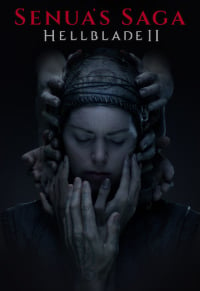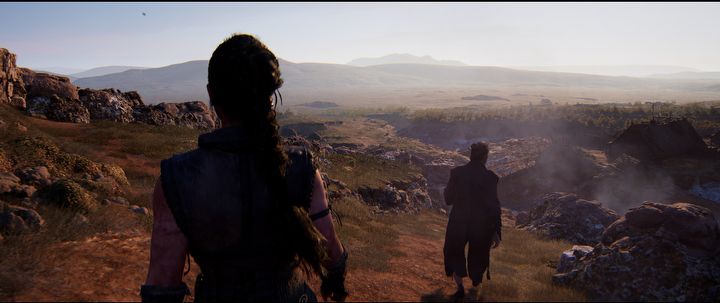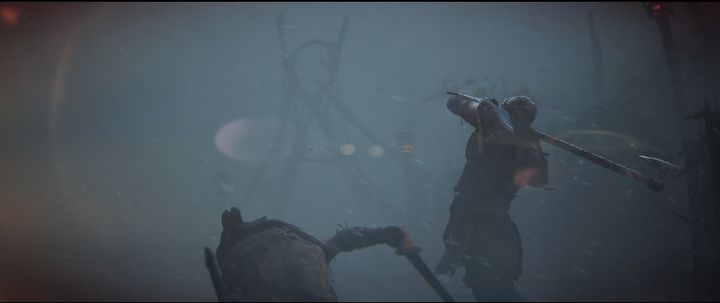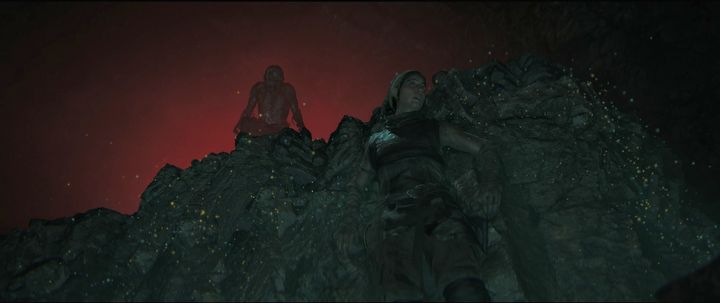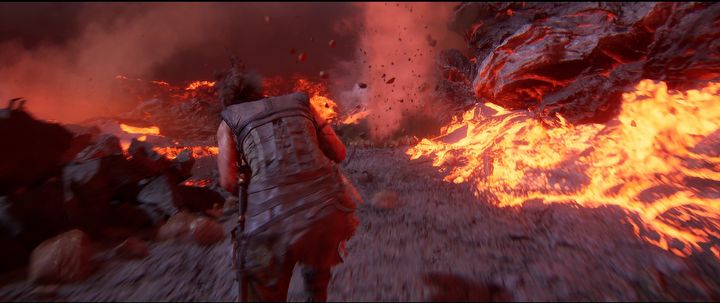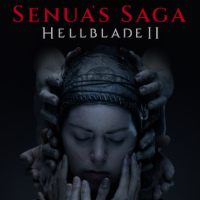Senua's Saga: Hellblade 2 Review - Best Movie You Can Play
Voices in the head can still be heard in Senua's Saga: Hellblade 2. The sequel offers a highly cinematic experience with stunning, photorealistic graphics, where even the combat serves the storytelling.
The review is based on the PC version. It's also relevant to XSX version(s).
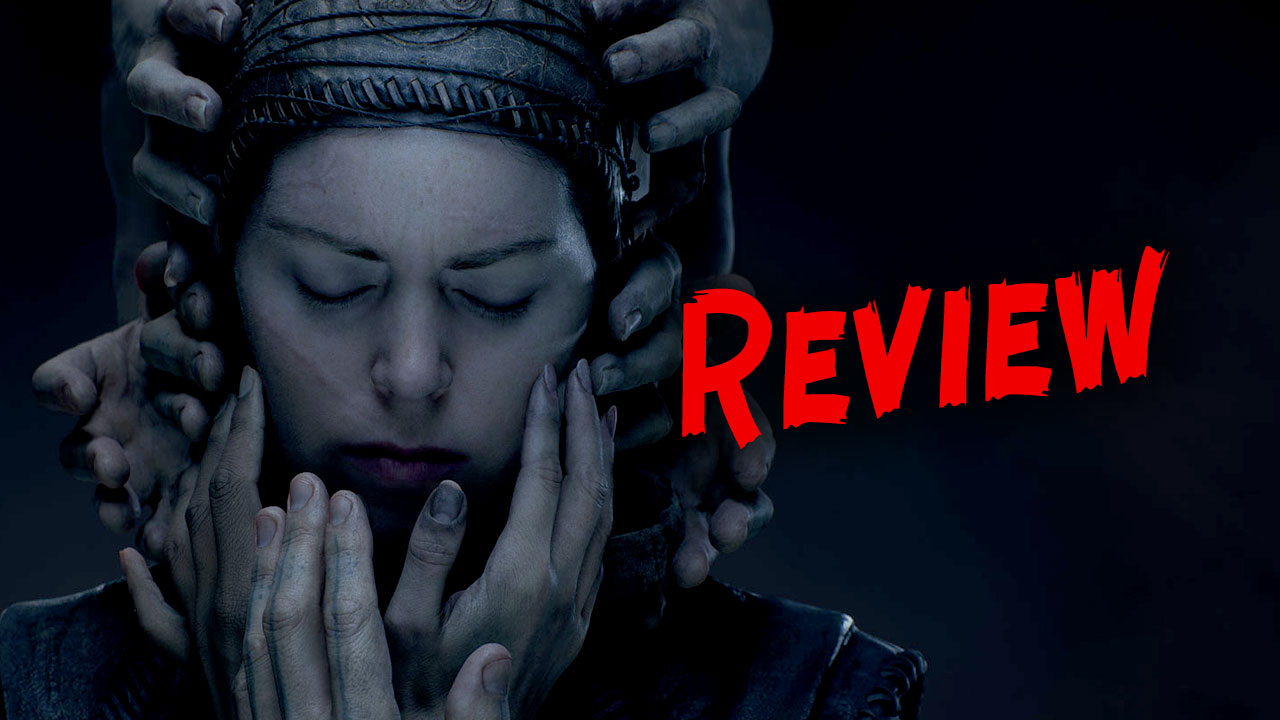
Seven years ago, Ninja Theory's Hellblade: Senua's Sacrifice demonstrated that there's no requirement to adhere to the familiar clichés of the action game genre. We don't need to have a screen cluttered with interface or health bars. There’s no need to constantly change and upgrade weapons or develop a character for the fight to be satisfying. Instead, we received one of the most distinctive game characters in history and a genuine exploration of the mental illness she had to deal with. The devs developed a game that lets you experience, even if only a little, what it's like to suffer from schizophrenia and hear strange voices in your head.
The second installment of Senua's story lets us once again face the issue of conflicting messages, incitement, and constant suggestions whispered into our ears. However, I have the impression that the burden of the protagonist's mental problems is much lighter in this installment and only becomes more significant towards the end. The plot in Senua's Saga: Hellblade II is less personal, with a much more important role for the side characters, but that doesn't mean it's bad. It's challenging to find a game with a story as mature, well-told, and well-acted, set in such a fantastic audio-visual setting. This is purely a narrative experience, leaning more towards walking sim with combat elements than action game, but again - this is definitely not a con! However, it may not be an experience for everyone.
New quest - sacrifice for the good of others
In Hellblade II, the voices in our head have become almost normal, if you can say so paradoxically. They comment on current events, discourage Senua, depict bleak visions, or on the contrary - express hope, positively encourage certain actions, and it's still worth playing with good headphones. This time, Senua embarks on a less personal journey. She desires to prevent the invasion of people from the north and the abduction of her kinsmen, who have become slaves in a foreign land. She allows herself to be abducted and in doing so, she makes her way to Iceland, to the very source of the problem, to somehow bring an end to this practice on the spot.
However, the reality is far more complex and it's not about slavery; Senua is confronted with an entirely new challenge that she is unable to complete on her own. Unexpected allies appear as companions, and the enemy to defeat isn't quite what it seems. The sequel's story is truly captivating and enduring, despite incorporating numerous elements from local mythology. Moreover, it has well-written dialogues, brilliantly played not only by Melina Juergens who portrays Senua. Combined with outstanding graphics using the capabilities of Unreal Engine 5 and photogrammetry, the whole time I felt like I was directing a character in a movie.
Narration above all
The devs ensured a high level of immersion and made sure that everything was subordinate to the narrative. There is no screen interface, no quick menu, no character development, no weapon change, and no upgrades - only the characters and their journey through Iceland. Loading screens have been cleverly disguised with familiar animations of squeezing through rocks, the locations are strictly linear and only occasionally allow for a brief detour to find a collectible. If Senua is sneaking, it's only because that's the script - we just move the character forward. We will rarely have to speed up our footsteps because, in this element, the developers constantly control the pace of the game, adjusting it to the narration. It's also difficult to distinguish when the actual game turns into a cutscene and vice versa - everything here forms one unified whole, even during combat.
That's why I compared it to a movie and a walking sim, as there is no freedom at all. It basically bothered me only in a few moments, where Senua has to make a choice. During such moments, we might wish to make the decision ourselves, but for now, we can only passively observe the protagonist's behavior. The game intentionally places us in a situation where we can clearly sense the choice and its predictable consequences, but it soon becomes evident that nothing of the sort will occur - this seemed a bit odd and led to a sense of disappointment. I would have directed that scene differently if I had the chance.
Feel the pain and blood
We can almost fully control Senua during environmental puzzles and combat. There are only two types of challenges here - finding runic signs in locations and unlocking passages with the help of metallic balls suspended in the air. Later, the two mechanics merge and you need to do some walking to unlock the path that leads to the place where you can see the rune. What Senua sees is based on what people with schizophrenia actually feel, and the game adapts this into puzzles that are neither trivial nor frustrating.
The combat is definitely more thrilling, and it occurs less frequently than before - it serves as a subplot and only appears in certain places, but when it does happen, it's intense! Considering that the game is short and there aren't many fights, it's worth setting a higher difficulty level right away. Sword duel mechanics have stayed consistent - we still have access to quick attacks, strong attacks, blocking, and dodging, but everything now feels less like a comic book and is more authentic and brutal. The characters' movements may be slow, and the impact of their actions can be rough - you can truly sense the weight of the sword in your hand and feel every splash of blood from the wounds. Even though we only press the block, dodge, and attack buttons on the controller, visually it looks ultra-realistic.
Senua’s Saga: Hellblade 2 is a fantastic game, but probably not for everyone. It appears to be a next-generation title in every aspect; impressive with its ever-changing Icelandic landscapes, realistic photogrammetry, lighting, particle effects, character movement animations, acting, and intriguing storyline. The combat is brutal, and the voices constantly heard by Senua sound as if we are hearing them in our own heads.
Find all our reviews on Metacritic and Opencritic.
The graphics play a big part in that - with atmospheric lighting, diverse particle effects, and excellent animations. The designs of the new opponents - the fearsome Draugr - who either attack directly or throw fire or spears, were also quite brilliant. There is also the mentioned blending of gameplay with cutscenes. Typically, it only lasts a few seconds to briefly depict Senua in trouble or a companion fighting nearby. Of course, these are only scripts that take away our control over the protagonist, but they are implemented very efficiently, without disrupting the rhythm of the combat and remaining very consistent with the overall cinematic atmosphere of the game.
The devs of Senua's Saga: Hellblade II also took an unconventional approach to boss fights, which... don't look like they do in other games. Simply put, we know we're up against a boss, we know who it is, and we're getting ready for it, but the gameplay is strictly focused on the plot and narrative, not on tired mechanics from other games. If you're expecting to swing your sword through several phases until the boss falls, you're in for quite a surprise - in my opinion, a positive one!
- engaging plot;
- brilliant creation of the main character, memorable supporting characters;
- beautiful, raw landscapes of Iceland, atmospheric location designs; you can see the power of photogrammetry;
- stunning graphics, great audio, and atmospheric music;
- brutal fights with realistic animations;
- a fluid, immersive experience without loading screens, screen interface.
- linear gameplay, practically giving no freedom;
- only illusory choices;
- a bit too much chromatic aberration that I couldn't disable.
Let's play it again, Senua
What do narrative-focused games typically have in common? They are short in comparison to other games. It's the same with Senua's Saga: Hellblade II. It's possible to finish it in a couple of hours and, as a small compensation, we will find a similar option there as in Alone in the Dark recently. You can replay the game with a different narrator. Instead of hearing the story from Senua's perspective, the narrators become the side characters we meet in Iceland. They provide a broader perspective on the events, sharing their motivations, emotions, and enriching the entire story.
The finale of the game may also be controversial for some. If someone expects a simple "Hollywood" ending, leaving no doubts or room for guesswork, they may be disappointed. However, the conclusion once more highlights the essence of games with Senua and revisits the inner turmoil of a person plagued by schizophrenia and various past traumas. It fastens everything that happened before with a clamp, even if it allows for speculation. I would summarize the ending of Senua's Saga: Hellblade II as "satisfyingly insufficient."
Bridge between two different genres
The second installment of Hellblade is a fantastic game, but probably not for everyone. It appears to be a next-generation title in every aspect; impressive with its ever-changing Icelandic landscapes, realistic photogrammetry, lighting, particle effects, character movement animations, acting, and intriguing storyline. The combat is brutal, and the voices constantly heard by Senua sound as if we are hearing them in our own heads. Senua's Saga is a one-of-a-kind experience that is hard to find in other titles.
However, we must accept the limited freedom it offers, its linearity, and its subordination to the plot narrative. I'm still more inclined to call it a walking simulator with great combat, rather than an action game. On the other hand, these parts, where you have to wield a sword, could persuade any critics of narrative games with minimal gameplay. Perhaps a more precise description would be to label Senua's Saga: Hellblade II as a bridge that connects walking sims with action games, incorporating the finest elements of both genres. This is probably the best movie you can play in right now.
Senua's Saga: Hellblade II
Senua's Saga: Hellblade 2 Review - Best Movie You Can Play
Voices in the head can still be heard in Senua's Saga: Hellblade 2. The sequel offers a highly cinematic experience with stunning, photorealistic graphics, where even the combat serves the storytelling.
